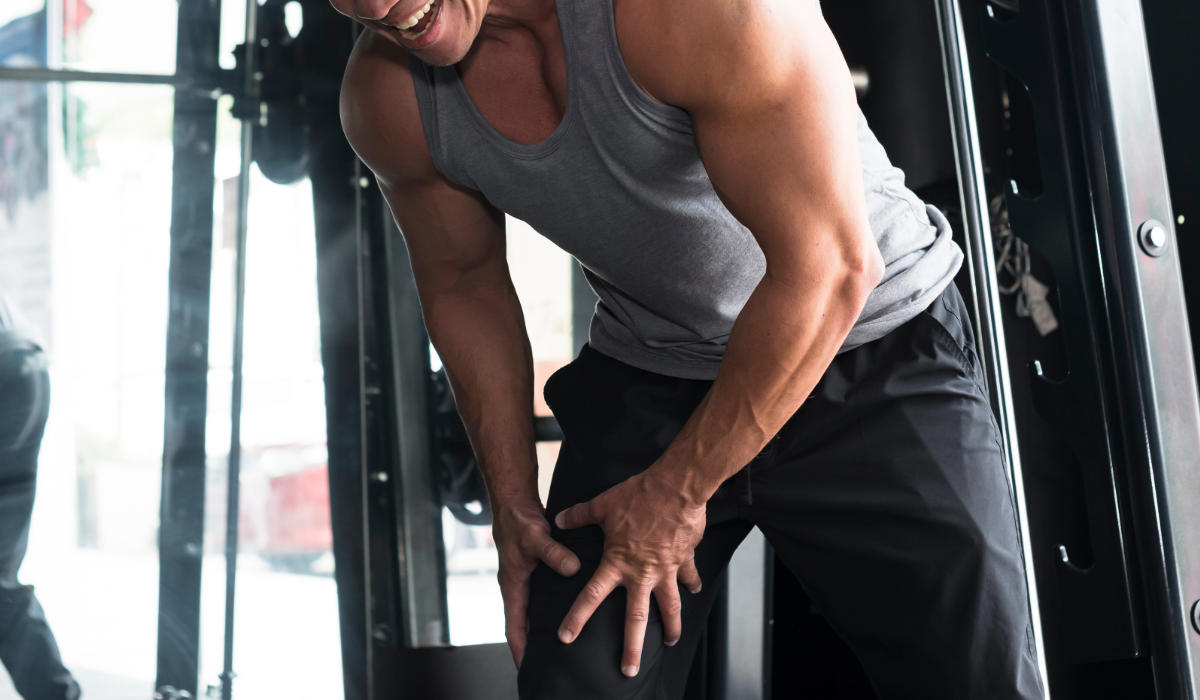Knee Pain from Squats & Jumps?

Here’s How 2 Protect Your Joints in Functional Fitness
Knee pain is one of the most common complaints I hear from athletes and fitness enthusiasts. If your workouts involve frequent squats, box jumps, lunges, or plyometrics, it’s no surprise your knees take a beating.
While knee pain is often dismissed as “just part of training,” it’s actually a sign that something isn’t working as it should. The good news? With the right approach, you can reduce pain, improve performance, and protect your joints for the long run.
Why Do Your Knees Hurt?
Knee pain from squats and jumping is often the result of poor movement patterns, muscle imbalances, weakness or overuse. Here are some of the most common culprits:
- Weak glutes and hips – If your glutes aren’t working efficiently, your knees compensate, leading to stress on the joint.
- Poor squat mechanics – Collapsing knees, improper foot positioning, or lack of depth control can cause excessive strain.
- Tight quads and hip flexors – Overworked quadriceps pull on the knee, leading to pain and dysfunction.
- Lack of ankle mobility – If your ankles are stiff, your knees work harder to make up for it.
- High-impact stress without recovery – Too much jumping or heavy lifting without adequate rest can lead to overuse injuries.
If knee pain is limiting your performance, it’s time to make some adjustments.
How to Protect Your Knees and Keep Training Pain-Free
1. Improve Your Squat and Jumping Mechanics
Proper technique is the first step in reducing unnecessary knee strain.
- Keep your knees tracking over your toes during squats and lunges—avoid letting them cave inward.
- Sit back into your hips rather than shifting weight forward onto your knees.
- Land softly when jumping, absorbing impact with your hips and glutes rather than just your knees.
2. Strengthen Key Muscles for Knee Stability
A strong lower body provides better knee support. Focus on:
- Glute activation (glute bridges, clamshells, band walks)
- Hamstring strengthening (Nordic curls, Romanian deadlifts)
- Single-leg stability (step-ups, RDL’s, Bulgarian split squats)
3. Increase Mobility in the Hips and Ankles
Limited mobility forces the knees to compensate, leading to pain over time.
- Hip openers like the pigeon stretch and 90/90 drills help with squat depth.
- Ankle dorsiflexion drills improve range of motion for better squat positioning.
4. Modify Workouts When Needed
If knee pain persists, adjust your training rather than pushing through discomfort.
- Reduce depth on squats or use a box squat to control range of motion.
- Swap high-impact jumps for step-ups or sled pushes to build strength without excessive stress.
- Adjust volume and intensity—sometimes, taking a break from heavy squats or frequent jumping allows for better recovery.
5. Prioritize Recovery
Overuse injuries happen when training outpaces recovery. To keep your knees healthy:
- Take rest days and deload weeks seriously.
- Use foam rolling and stretching for the quads, hamstrings, and calves.
- Stay hydrated and eat a diet rich in anti-inflammatory foods to support joint health.
Is Your Knee Pain Holding You Back? Let’s Address It.
If knee pain from squats and jumping is limiting your workouts, don’t ignore it. A sports physical therapy evaluation can help identify the root cause and create a plan to keep you training without discomfort.
Book a free injury consultation today and get back to moving pain-free.
Book Your Consult Today
- Dr. Zach Baker, DPT, SCS, Chief Clinical Officer

About Rehab 2 Perform
Rehab 2 Perform is a leading physical therapy and sports rehabilitation company dedicated to helping clients achieve optimal performance in their daily lives, whether they are athletes, weekend warriors, or individuals recovering from injury. With a team of highly skilled professionals across 11 state-of-the-art locations (soon to be 12), Rehab 2 Perform offers a personalized, evidence-based approach that emphasizes active rehabilitation and functional fitness. Find a Location near you, or Schedule Here.
